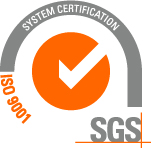UTT (Urban Travel Times) is a system for monitoring travel time in an urban setting.
More than 150 km of roads within Rome are monitored using cameras equipped with a license plate recognition software and a sophisticated processing algorithm, allowing the system to measure vehicles' transit and calculate travel times
Collected data (updated every 5 minutes) are published on Variable Message Signs, allowing users to choose how to move, identifying any critical traffic areas due to the occurrence of abnormal situations (accidents, events, etc.).
The system is also used to provide real-time information to citizens on the state of traffic on the routes monitored.
UTT system covers major routes monitored in the historic city center and other parts of the city:
- Lungotevere - Muro Torto
- Cristoforo Colombo - San Giovanni
- Cristoforo Colombo - Marconi
- Tiburtina - Croce Rossa - Muro Torto
- Flaminia - Olimpico - Lungotevere
- Aurelia - San Pietro
- Villa Pamphili - Olimpica
- Prenestina - Piazzale Appio - Piramide
- Villa Carpegna - Tangenziale Est - San Giovanni
- Castrense - Tangenziale Est - Villa Carpegna
- Appia Nuova
- Tuscolana
- Viale Libia
Measurement Stations
The monitoring system is composed by 62 measurement stations for 123 street sectors monitored through sensors installed underneath the road surface, the data registered by these sensors is transmitted to the Mobility Control Centre.
These sensors provide data with an update frequency of 5’ throughout the 24 hours, creating a database in which merge also traffic data provided by the traffic lights devices, the electronic passages and variable message signs.
The central integration (supervisor) takes place through a geo-referenced representation of the road network that univocally connects data provided by 2500 sensors installed on streets and with the arches of the road network.
The data is not only stored in an archive, but also represented on a cartographic database (GIS) to be used by operators of the Mobility Control Centre, offering them a picture of the situation of the road network.
The information acquired is relative to traffic flows expressed in vehicles/time, speed expressed in km/h and the occupation level expressed in percentage.

